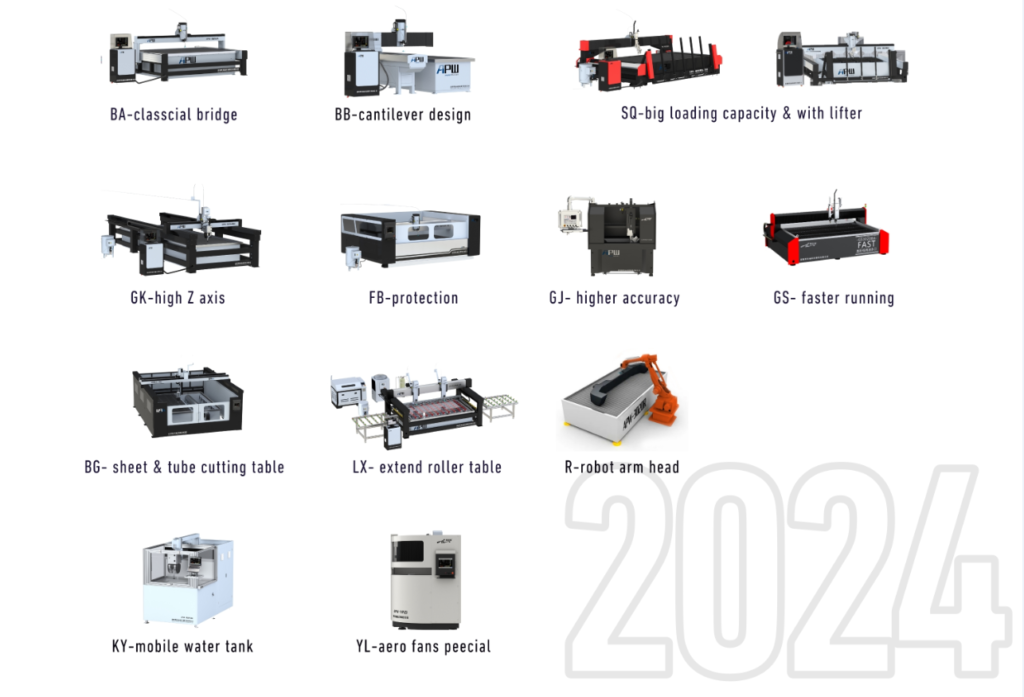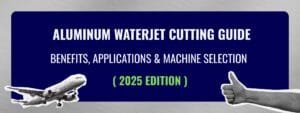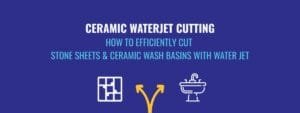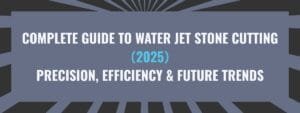This article compares the revenue and return on investment (ROI) of water jet cutting and laser cutting to help corporate decision-makers make financial decisions. Processing conditions in this article are based on the average situation of China’s manufacturing industry, with amounts listed in both RMB and USD (CNY: USD = 7.1886). Costs and revenues such as energy prices, labor wages, and local processing fees may vary regionally. This article is only for reference – for personalized assistance. Contact APW WATER JET SALES. It is every machinery provider’s obligation to help customers maximize profits.
Watch cutting videos or book water jet factory tours . Please emWatch cutting videos or book water jet factory tours . Please mailto:ti**@*pw.cn” data-original-string=”6ZbnJcsk/VOdooofBjTQ4w==29e1RFpdzScB8mChurZZylO7SGr6ZNenBz2HwAYgUa0Mcc=” title=”This contact has been encoded by Anti-Spam by CleanTalk. Click to decode. To finish the decoding make sure that JavaScript is enabled in your browser..ail APW.
I. Water jet cutting VS Laser Cutting : Quantitative Model of Processing Revenue (Annual Revenue Estimation)
Assumptions:
- Annual operating time: 2,500 hours (10 hours/day, 250 days/year)
- Processing unit price: Varies by material complexity and precision requirements
| Scenario | Laser Cutting | Water jet Cutting |
| Thin Metal Processing | – Material thickness: 10 mm stainless steel – Capacity: 300 pieces/year – Unit price: $2.09 (¥15) – Annual revenue: $626.70 (¥4,500) | – Not applicable (lower efficiency for thin materials) |
| Thick Metal Processing | – Material thickness: 50 mm carbon steel – Capacity: 25 pieces/year – Unit price: $27.82 (¥200) – Annual revenue: $695.50 (¥5,000) | – Cutting speed: 500 mm/min – Capacity: 625 pieces/year – Unit price: $25.04 (¥180) – Annual revenue: $15,650.00 (¥112,500) |
| Precision Electronic Component Cutting | – Product: Circuit boards – Capacity: 500 pieces/year – Unit price: $6.96 (¥50) – Annual revenue: $3,480.00 (¥25,000) | – Not applicable (slightly lower precision for electronics) |
| Stone Art Carving | – Not applicable (thermal processing damages stones) | – Single-piece time: 10 hours – Capacity: 250 pieces/year – Unit price: $111.29 (¥800) – Annual revenue: $27,822.50 (¥200,000) |
II. Water jet cutting VS Laser Cutting : Return on Investment (ROI) Comparison
Formula ROI = (Annual Net Revenue / Initial Investment) × 100%Assumptions:
- Annual net revenue = Annual processing revenue – Annual operating costs
- Equipment lifespan: 10 years
- Residual value and tax impacts excluded
| Scenario | Laser Cutting | Water jet Cutting |
| Thin Metal Processing | – Initial investment: $20,865.00 (¥150,000)<br>- Annual net revenue: -$2,851.00 (¥-20,500)- ROI: -13.7% (Loss) | – Not applicable |
| Thick Metal Processing | – Initial investment: $69,550.00 (¥500,000)<br>- Annual net revenue: -$6,955.00 (¥-45,000)- ROI: -10.0% (Loss) | – Initial investment: $27,820.00 (¥200,000)<br>- Annual net revenue: $11,475.00 (¥82,500)- ROI: 41.25% (Profit) |
| Precision Electronic Component Cutting | – Initial investment: $41,730.00 (¥300,000)<br>- Annual net revenue: $696.00 (¥5,000)- ROI: 1.67% (Low return) | – Not applicable |
| Stone Art Carving | – Not applicable | – Initial investment: $20,865.00 (¥150,000)<br>- Annual net revenue: $24,345.00 (¥175,000)- ROI: 116.67% (High return) |
III. Water jet cutting VS Laser Cutting : Scenario-Based Investment Return Analysis
1. Large-Scale Thin Material Production (e.g., Automotive Parts)
- Laser Cutting Advantage: While ROI is negative under low-value scenarios, mass production (e.g., 100,000 pieces/year) reduces unit costs, achieving 10%–15% ROI.
- Key Variables: Order stability and automation (robot integration can increase capacity 3–5x).
2. High-End Thick Material Customization (e.g., Aerospace Components)
- Water jet Cutting Advantage: Premium pricing (e.g., titanium parts >$1,000) and scarce capabilities drive ROI over 50%, with payback periods <3 years.
3. Small-Batch Precision Processing (e.g., Medical Devices)
- Laser Cutting Preference: Despite low ROI, high-precision orders command 30%–50% premiums, sustained by long-term technical barriers.
4. Environmentally Friendly Processing (e.g., Food, Medical-Grade Materials)
- Water jet Cutting Hidden Benefits: Compliance with EU REACH and other regulations enables entry into high-end markets (e.g., medical device processing), yielding 20%–40% higher revenues than traditional methods.
IV. Water jet cutting VS Laser Cutting : Decision Recommendations: Cost-Revenue-Strategy Three-Dimensional Model
1. Short-Term Profit Priority
- Choose waterjet cutting for high-value thick material/customized scenarios (e.g., stone art, aerospace components) with >100% ROI and high competitive barriers.
2. Long-Term Scale Expansion
- Choose laser cutting for standardized thin material production, increasing capacity via automation (e.g., 5,000 hours/year operation) to lift ROI to 20%–25%.
3. Risk Control
- Water jet Cutting: Secure long-term abrasive supply contracts to reduce consumable costs by 10%–15%.
- Laser Cutting: Monitor technological upgrades (e.g., fiber laser replacing CO₂ laser to cut energy consumption by 40%).
Summary: Revenue-Driven Technology Selection Logic
- Laser Cutting: Suited for large-scale, high-precision thin material markets. Revenue depends on capacity utilization and tech upgrades, ideal for enterprises pursuing long-term market share.
- Water jet Cutting: Suited for high-value thick materials and heat-sensitive materials. Revenue stems from process scarcity and environmental premiums, making it ideal for SMEs entering niche high-end sectors.
Final decisions should integrate corporate strategy (cost leadership vs. differentiation), target customers (B2B mass procurement vs. B2C customization), and regional policies (e.g., environmental subsidies favoring waterjet technology). Use dynamic financial models (NPV, IRR) for quantitative evaluation.




